Lewis and I are travelers who love to share our stories to invigorate you to explore. This addition to my blog is richly full of details so you can come vicariously with us. Please take your time and enjoy. We made a transatlantic flight (the British call is "crossing the pond") to the United Kingdom of Great Britain and Northern Ireland. Our destination was its capital: London. London is also the capital of England: one of the kingdom's four constituent nations. Later, we also ventured through the City of London (a.k.a. The City).
Two places named London? Yes. Unique in the world, the City of London is a one-square-mile entity that is separate from the rest of the United Kingdom. (Formed centuries later, Vatican City might've copied some if its qualities to exist within Rome as its own nation).
https://halfwindsorfullthrottle.blogspot.com/2022/03/our-trip-to-italy-part-5-of-7-vatican.html
Founded as Londinium in 47 AD by the ancient Romans, the City of London preexisted most of British society. Alexander the Great—who was infamous for conquering everyone—was defeated by the native clans of Britons in England. It took two years for the Roman legions to invade/colonize England and establish Londinium. Soon after, a Celtic queen (yes, a female ruler and warrior) led a massive army that burned it down. Her uprising was a catastrophic defeat for the Roman Empire. Her name was Boudica, and a statue of her on a chariot is outside the UK's Parliament, as a humble reminder. We saw it, and it looks like this...
The walled City was rebuilt and became an international destination for mercantile success.
Ruins of its walls still stand, and more were unearthed during the Nazi's bombing Blitzes of WWII.
With its capital at London, the pagan Kingdom of Essex (East Saxons) was founded in the 500s. It was one of many Saxon-populated kingdoms. In 825, it was amalgamated into the pagan Kingdom of Wessex (West Saxons). In the 900s, King Alfred the Great unified it with the kingdoms of Sussex, Kent, and West Mercia into a new Kingdom of England. (Nowadays, the Queen's youngest son is the popular Earl of Wessex...
...and businesses, regiments, and colleges in that region still use Wessex in their names).
In essence, England was its own United Kingdom, at that time.
It was an Anglo-Saxon one. The term Anglo-Saxon is a blend of two 5th-century Germanic clans, Angles and Saxons, who settled in Britain. I'm familiar with that because King Alfred was the symbol of my university, and Saxons were the sports mascots.
In 1066, William the Conqueror granted The City its everlasting rights to be self-governing. The walled city was too wealthy and strong for him, so he conferred those privileges if The City recognized him as the King of England (and then his gay son, who became King William II Rufus). It worked.
William had Danish Viking lineage (known as North Men, Norsemen, and Normans), and his forebears invaded France until its king gave them land, which they called Normandy (Normandie) in 911. From there, William launched his invasion of the British Isles via the Norman Conquest of 1066. He erected The Tower of London fortress nearby, to watch The City.
Developing around The City, the metropolitan area called London began centuries later. Technically, London is not a city; it's an administrative region of 32 boroughs.
The municipality of London has a mayor: Sadiq Aman Khan, who won reelection and is its first Muslim mayor.
Naturally, we chose to fly aboard British Airways, which is excellent. Our flight attendants were the cheeriest that we ever encountered. The two who were designated to our area told us that we had "good energy", and they spent time socializing with us. When they offered us more wine, we agreed, and the fellow said, "More wine is always a jolly good idea". (Whereas Americans say "jolly" to mean jovial, the English use it to mean "very"). The legroom was also admirable, and we were pleased that the airline did not fill the plane with passengers (as greedy American carriers did throughout the pandemic), which respected "social distancing". Our mealtimes were prefaced with two individual-sized bottles of wine (they were ceremoniously presented as if a sommelier was on duty). Another was offered during dinner. Tea and coffee was served afterwards. Water/juice was offered from a trolley throughout the night. Breakfast included juice (tomato for me, orange for Lewis) and a mediocre croissant stuffed with ham/cheese.
Our plane descended over Europe's largest island: Great Britain. We landed in England, and this is its flag.
Disembarking at Heathrow International Airport was a joy.
Unlike the seven American airports that I had experiences at, it was bigger yet easier to navigate. It was also newer, cleaner, and better-staffed. It lives up to its motto: "Making Every Journey Better". Founded in 1929, it predates both of NYC's airports, but is was refurbished more often. As one of six airports serving Greater London, it is used by 80 airlines and has 115 gates amongst four terminals. Before the pandemic, it annually facilitated 80 million travelers. (Our departure airport, JFK, only handles 60 million... and still woefully suffers from ineptitude and a lack of reinvestment).
Upon arrival, my T-mobile cellular plan presented me with adequate service.
Heathrow has a wonderful investment in infrastructure: a subterranean tramway (shuttle train) that connects the terminals. Yellow signs indicate which side of the platform has the next-departing train. Glass doors enclose each platform, to keep debris off the tracks. We boarded and were whisked to the other side of the airport. JFK has nothing like that; passengers must tote their belongings across the length of its facility. Tourists and locals queued themselves in an orderly way. No pushing or shoving.
Next, we had to get to the city-center.
Brainwashed from their "car culture", Americans may want to drive themselves everywhere... but cars are not needed. It is better to use the marvelous public transit and your own two feet.
There are two rail options to overcome the 14 miles to Central London: the Metro (it is called the Underground and nicknamed The Tube)—which takes 50 minutes, or the Heathrow Express train—which takes 15 minutes. We opted for the speedier one, which garners superb ratings from its customers.
Trains depart every 15 minutes. Unmistakable signs guide you to the train terminal.
In lieu of using a ticket vending machine, we interacted with a smiley (and suited) airport employee. Equipped with a handheld credit card reader and portable printer, he courteously dispensed our roundtrip tickets. Being conversational, he asked how long we intended to stay in England. Lewis said, "Several days." He replied, "That's brilliant." British people use the word "brilliant" to mean excellent or wonderful.
A roundtrip ride costs £37. You can save 75% if you buy it in advance. (First Class seats cost approximately £10 more). For comparison NYC's Airport Shuttle Bus is much slower and costs $35 for a roundtrip fare. NYC's airports are neglectfully not connected to its subways or trains, but an AirTrain will slowly take you to them. It is only free if you ride within the airport, which is unhelpful and absurd. If you need to go to the Howard Beach subway station or the Jamaica subway/train hub, the cost is $7.75... which is outrageous (and is only payable after you buy a Metrocard).
Let's discuss money in the UK. While most of Europe shares the currency of Euros, Britain relies on its historic currency of Pounds Sterling (£). In the USA, 100 cents = one dollar. Similarly, in the UK, 100 pence = one pound. The monarch is featured the money, which is printed by the Bank of England (established 1694 and headquartered in the City of London), and it is overseen by Her Majesty's Treasury (created in 1126).
In a skylit pavilion, perfectly-cleaned elevators (the British call them "lifts") took us down to the train platform.
*After hearing Americans warn us about Britain's COVID conditions, we were relieved to see that nearly everything in London is MUCH CLEANER than NYC.
Already familiar with Tap-In/Tap-Out transportation, we skimmed through the electronic gates (London never uses grimy turnstiles), and saw our sleek express train.
The train featured luggage racks, overhead storage, super-fast WiFi, cup-holders, and e-charging sockets at every seat. To keep noise out—and the air-conditioning in—the train doors remain closed, and you press a yellow button to open them. With whisper-quiet smoothness, the train accelerated out of the airport. Traveling at 100 miles-per-hour, we came aboveground and admired the scenery. That might sound silly, but New Yorkers are forced to look at dumped garbage and neglected properties along their train routes... so seeing green fields, flowerbeds, and tidy structures along railroad tracks is a nice change. The large and varied amount of train traffic on the parallel tracks indicated that Britain truly utilizes its electric railways (and thus avoids truck/car traffic congestion).
https://halfwindsorfullthrottle.blogspot.com/2019/02/metro-north-filth.html
Our high-speed train arrived inside London's Paddington Station with the smoothness of a Rolls Royce.
Just as King's Cross Station is famous due to Harry Potter, Paddington Station's fame was helped by Paddington Bear. As a child, my local librarian acquainted me with British tales like Paddington Bear and Winnie the Pooh, as well as tales about Madeline and Babar.
It is a gorgeous, sunlit station, with historic ironwork and a grand-looking clock marked with Roman numerals.
The first thing we loved was London's low skyline: an absence of skyscrapers blocking the sky.
Notwithstanding its proximity to the bustling station, the vicinity is tidy and cozy. Historic buildings line both sides of the two-lane street.
It is a stark contrast from what we experience when we exit NYC's Grand Central Terminal (which looks like this).
The next thing we noticed is how calm the surrounding area is. You would never guess that one of the city's busiest transit hubs is nearby. In The States, neighborhoods around transit hubs are usually forlorn and full of beggars and vagrants. Not in London.

Despite being a cosmopolitan metropolis, London is dotted with many pretty parks. Nearly every area has a park to enjoy. In contrast, Manhattan's overdevelopment created swaths of skyscrapers and utilitarian structures... but few parks. (To lure people, NYC includes playgrounds and empty lots as parks). Within our first few minutes of walking, we encountered Norfolk Square Garden, Talbot Garden, Cambridge Square, Gloucester Square, and Hyde Park Square. They are all "landmarked" gardens. Thanks to London's aversion to high-rise buildings, plenty of daylight fills those green spaces.
*The "parks" that NYC offers (at twice the living costs) can barely be used and look like this:
https://halfwindsorfullthrottle.blogspot.com/2023/01/the-real-parks-of-new-york-city.html
Since it was beautiful day, we decided to walk through Hyde Park, to reach our hotel. (Ironically, the first English people I met—as a boy—were an older couple who babysat me, and they lived in a Long Island community named New Hyde Park). On our way to the park, Lewis and I traversed a triangle of land named Hyde Park Estate. It belongs to the Church of England, which is reminiscent of medieval eras when churches were landowners/landlords. It's an affluent neighborhood, full of London's characteristically curvy streets.
That is similar to how NYC's Trinity Church was granted 60+ acres by England's Queen Anne in 1705. It still possesses 14 acres in Manhattan and collects a lot of pricey rent.
Suddenly, we found ourselves against Hyde Park. Sidewalks around it are wide and made of stones, instead of concrete. It makes it quaint.
Using a crosswalk, we traversed the road and entered. The expansive park looks like this.
Originally, it belonged to Westminster Abbey, until 1536, when King Henry VIII bought it and converted it into a royal hunting ground. (At that time, he was married to the third of his six wives).
*To see when Lewis and I rode horses in that park, please use this link:
https://halfwindsorfullthrottle.blogspot.com/2022/09/our-return-to-london-uk-part-3-of-6.html
We saw numerous friendly ducks and geese waddling on the lawns, and they joined flocks of swans by the Serpentine Lake. A cafe has lovely views of the water and its boaters. The grass was lushly green, the paths were void of dog poop (unlike anywhere in NYC), and the benches were all cleanly suitable to use.
Be nice to the species of "mute swans"; the Crown owns most of them via a centuries-old Royal Prerogative.
Crossing a wide bike lane...
...and South Carriage Drive, we exited the park through Albert Gate, near the Embassies for France and Kuwait, which were built as mansions in 1843.
Our 4-star hotel was the Millennium Knightsbridge in the Knightsbridge area. The vicinity earned its name during the Middle Ages when two knights fought on a one-way bridge, and both toppled to their deaths in the swamp. Evidently, nothing more exciting happened in that area, so that name remains.
The hotel has an unbeatable location in Inner London. An Underground station is on the corner. Several bus routes pass the hotel, in both directions. Taxis are easily hailed at any time. Situated on Sloane Street, the hotel is only 500-feet from Hyde Park and 2,000-feet from the Gardens of Buckingham Palace!
Nearby, we saw the embassies for Denmark, Peru, and the island-nation of Iceland, as well as the High Commission of Pakistan.
Knightsbridge is one of the most expensive parts of London, yet the hotel's nightly rate was less than the rip-off prices of any 4-star hotel in NYC by Central Park. The length of Central Park is 2.5 miles, and it stretches for 51 blocks on both sides. Yet, no 4-star hotels exist near it. Instead of offering guests access to the beautiful park, Manhattan hoteliers funnel them to degenerate areas like Times Square. There, visitors are more likely to lose their money in seedy chain-restaurants, sleazy tourist traps, and overpriced "attractions". While we paid £110 ($150) per night in London, the 4-star hotels in NYC charged nightly rates of $303, $429, $381, $365, $312, $366, $699, and $629. Knowing that it handled COVID the worst of any city in the world (due to its refusal to reinvest in safety and infrastructure), NYC still has the audacity to overcharge for hotel rooms! For those prices, NYC provides litter on every street, homeless people huddled in doorways, street hawkers selling imitation handbags on the sidewalks of Fifth Avenue, garbage spilling from trashcans, piles of business garbage on the pavement, never-ending honking of car horns from aggressive drivers, debris from ongoing roadwork, and a smokey stench of unclean street vendors in every notable site.
The affordability in London was not due to the pandemic; we booked our room before COVID-19 was globally known and before the lockdown happened. Fair prices are indicative of London's culture. It might be costlier than other European cities, but it is half the cost of similar accommodations in NYC.
Other guests queuing to Check In were Belgian, Portuguese, American, and a group of Englishwomen from somewhere north. Our sunny queen-sized room had an electric system of brass-plated buttons that controlled various lights. Our windows faced the street's upscale shops.
Bottled water was complimentary, but it is also safe to drink London's tap water. Lewis wanted to steam some of our clothes, so he telephoned (the British say "rang up") the Front Desk, and they promptly dispatched a vested porter to deliver an ironing board and iron/steamer. Realizing that we forgot to bring toothpaste, we asked the polite porter, and he graciously fetched us complimentary toothpaste, toothbrushes, and extra bottles of body wash. His English accent and deferential manner made his gesture even more gracious. England has a non-tipping culture, so people do a good job because it is expected; they do not expect gratuities. (We confirmed that with locals). Taxi drivers, baristas, doormen, bellboys, porters, and bartenders do a great job and do not crave tips. From what Americans are accustomed to, their level of service is extraordinary (and to get it in America requires bribery of tips)... yet it is the English norm... without tips.
Lewis and I were excited to venture out and start our first day. Join our fast-paced trip in Part 2, on the next page.




















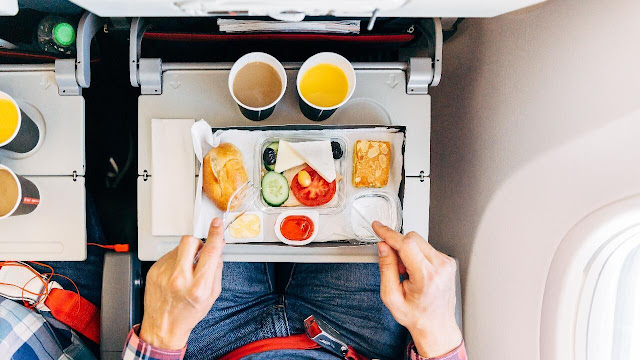






















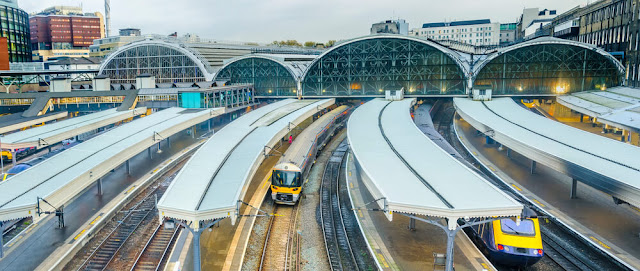

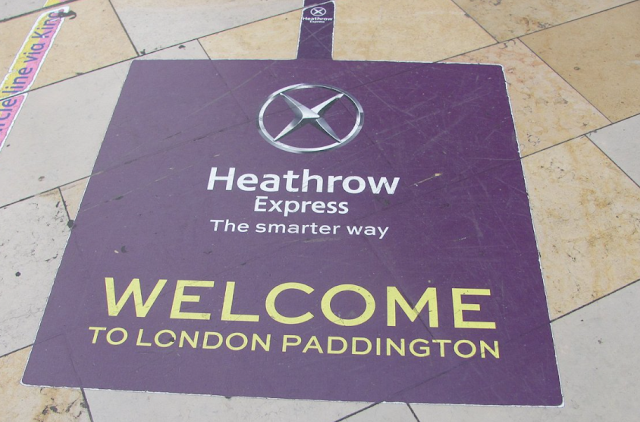















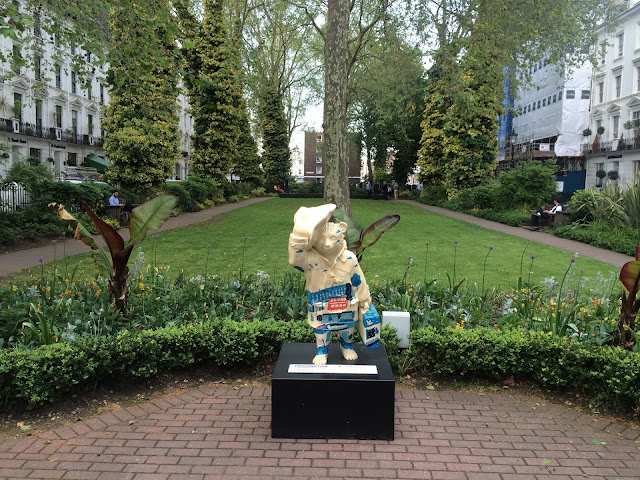



























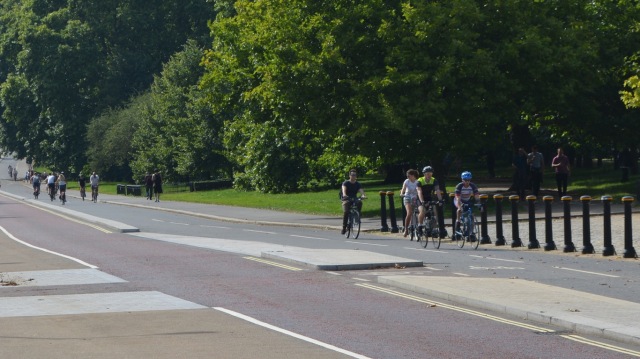








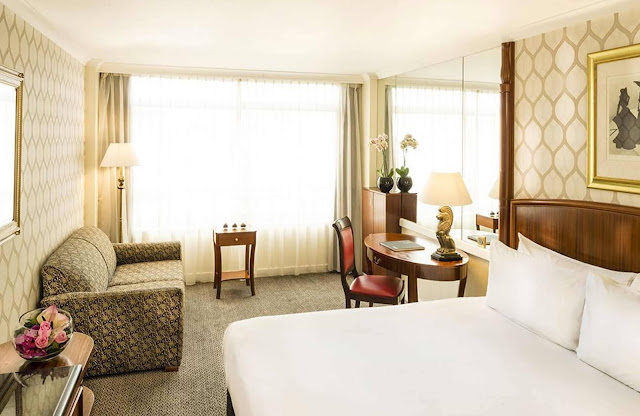
No comments:
Post a Comment
Don't be shy: leave your comments :)